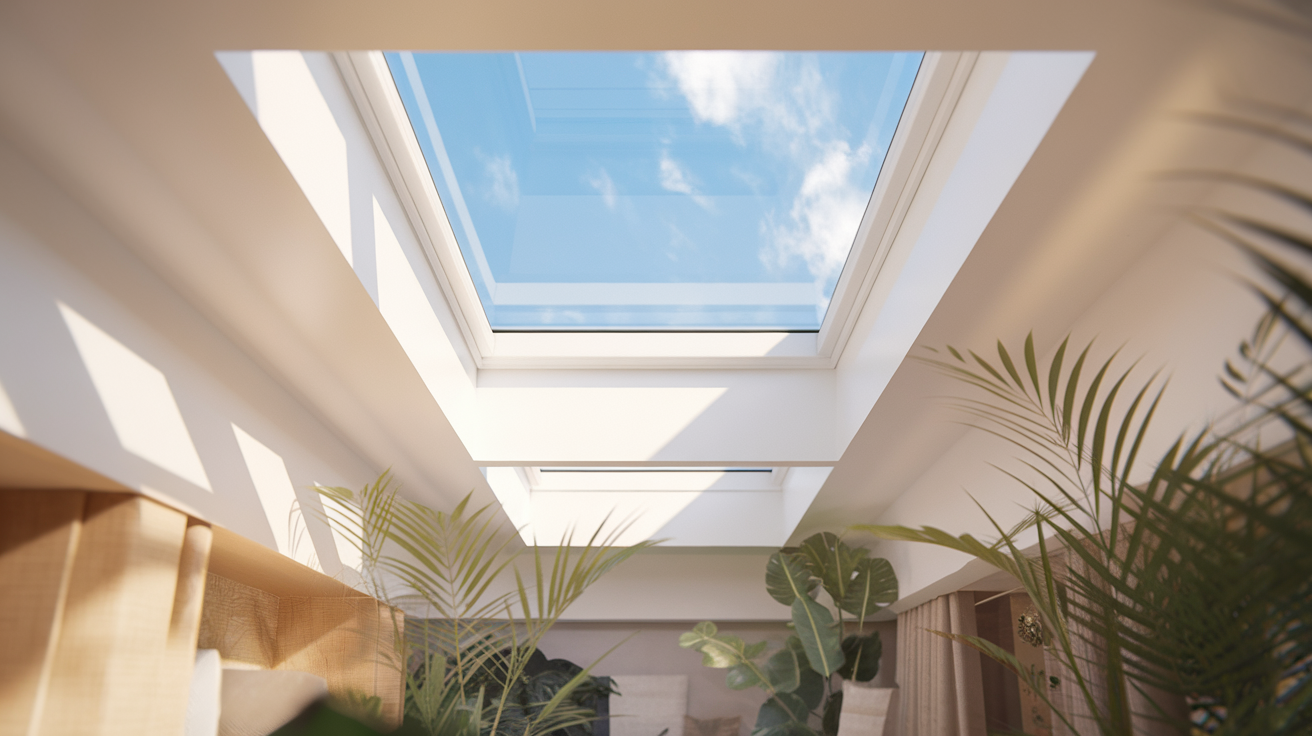Thinking about adding more daylight to your home? A skylight might be just what you need.
But with so many choices out there, it can be hard to know which one works best for your space. That’s where I can help.
I’ve put together a simple guide to walk you through the main types of skylights, how each one works, and what kind of rooms they suit best.
You’ll find answers to questions like, “Which skylight is right for my kitchen?” or “Do I need one that opens?”
If you’re planning a new build or just want to brighten up a room, the goal here is to make your choice easier.
Let’s take the guesswork out of it so you feel confident moving forward. You’re in the right place to figure this out.
Why Consider a Skylight?
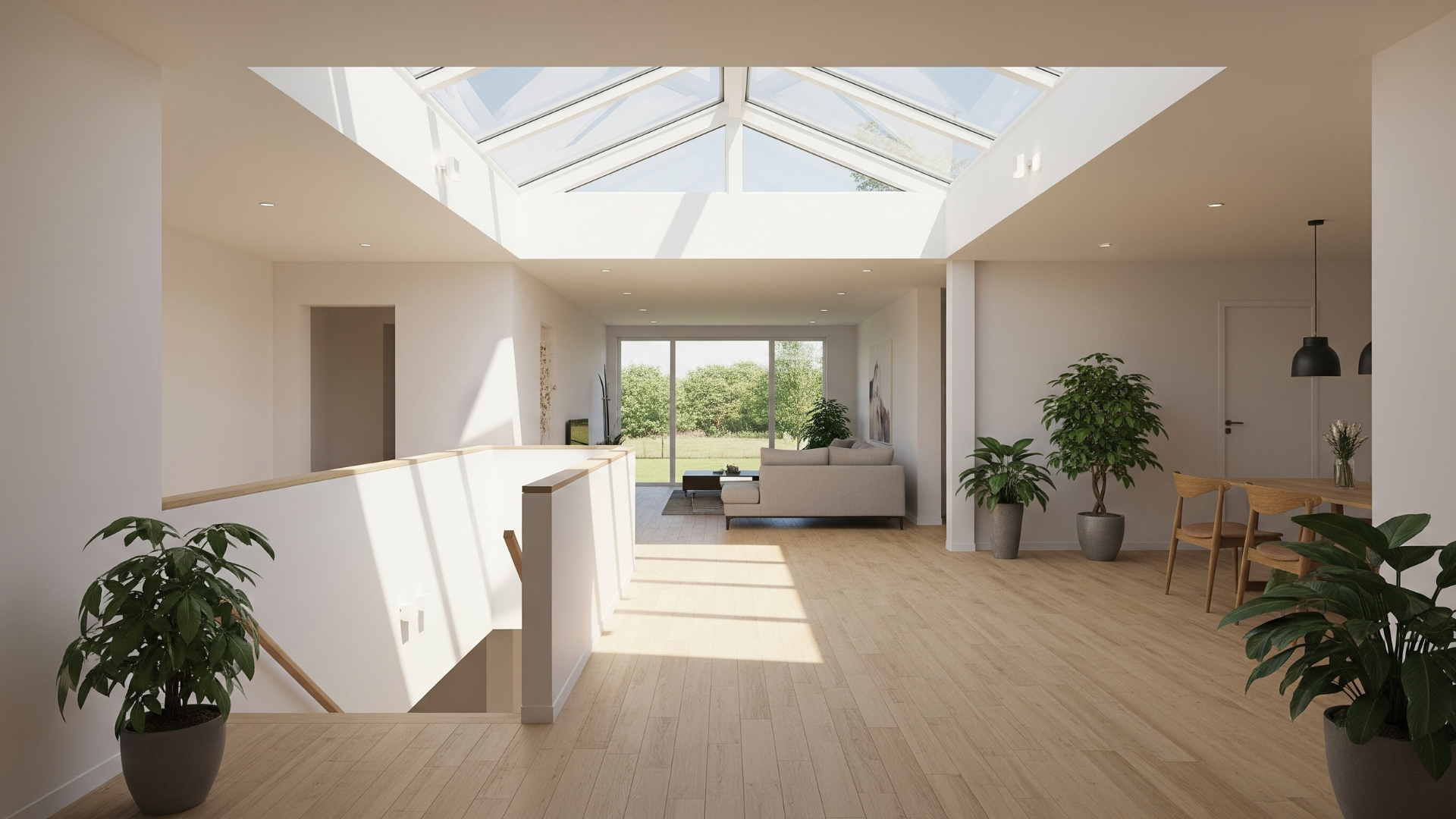
Skylights do more than just look nice-they bring natural light into your home, which can make any room feel more open and welcoming.
If you’ve got a dark hallway, bathroom, or living room, a skylight can brighten things up without needing to add more lamps or bulbs.
Some skylights even open up, letting in fresh air to help keep your home cool and comfortable. This can be really useful in spaces that get stuffy or don’t have windows.
They might even help lower your energy bills since you’ll use less electric lighting and cooling. Plus, natural sunlight can lift your mood and make everyday tasks more pleasant.
If you’re thinking about ways to improve your home, a skylight might be a smart and simple choice.
It’s all about bringing in more light, more air, and more comfort where you need it most.
Main Types of Skylight
There are several types of skylights, and each one works best in different spaces. Look at the most common options to find the right fit for your home.
1. Fixed Skylights
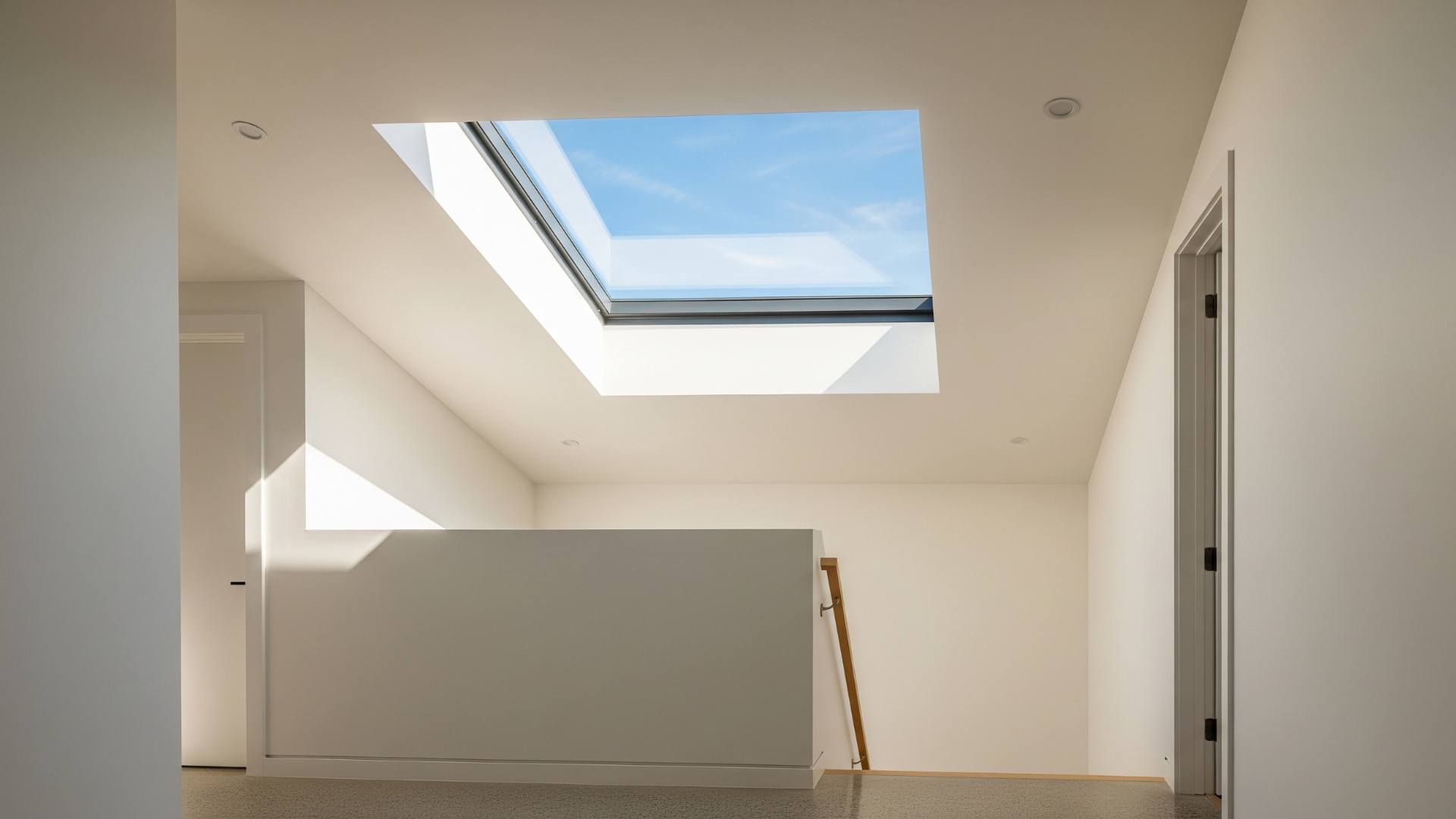
Fixed skylights are sealed units that don’t open. They’re mainly used to bring in natural light without affecting air flow.
These are great for areas where ventilation isn’t needed, like hallways, staircases, or living rooms.
Since they stay shut, they’re also better at keeping out moisture and require less maintenance.
If you just want more daylight and a clear view of the sky, this type is a solid pick.
2. Ventilated Skylights
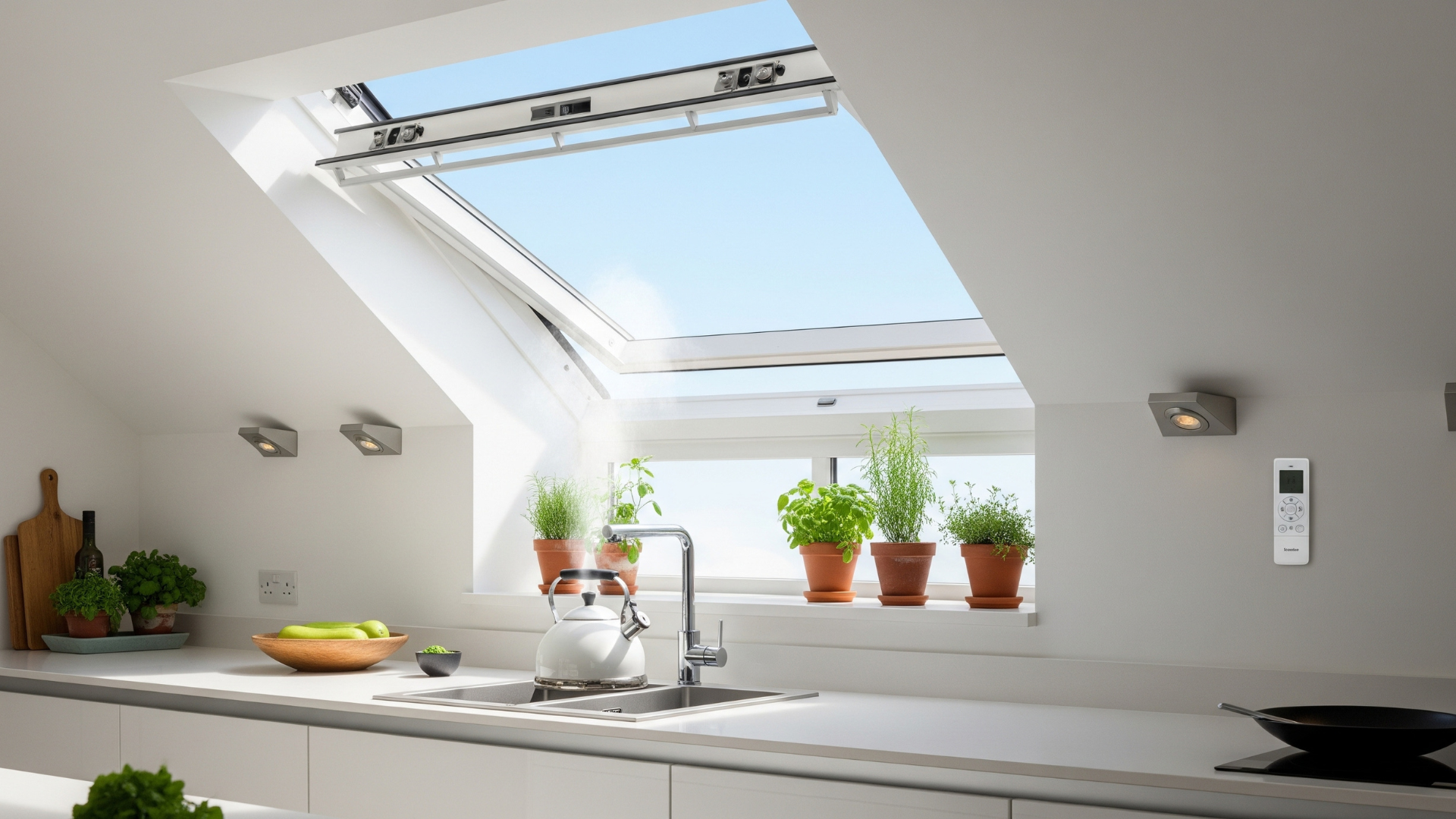
Ventilated skylights can be opened to let in air along with light.
They’re available in manual or electric versions and are perfect for bathrooms, kitchens, or laundry rooms-places where fresh air helps control moisture and odors.
Some even come with rain sensors that close them automatically.
If you want both light and air, these skylights are a smart choice for boosting comfort and reducing the need for fans.
3. Tubular Skylights
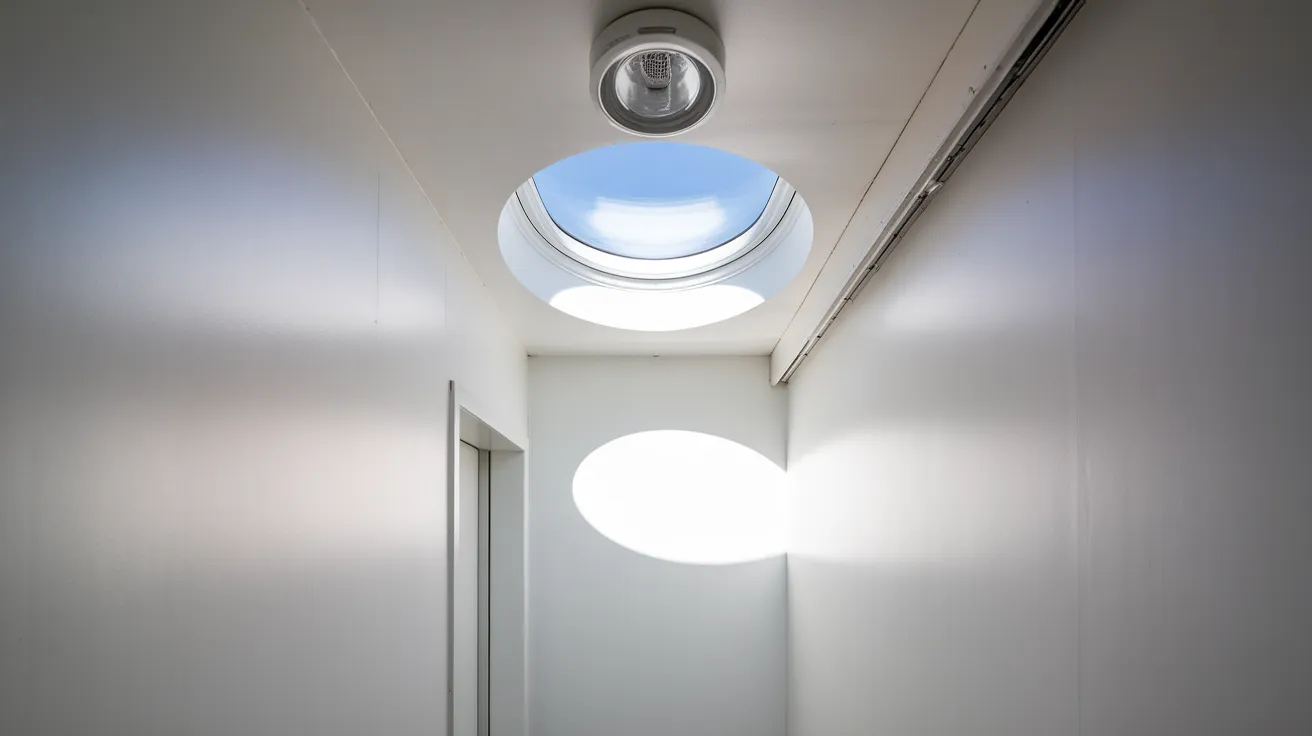
Tubular skylights are compact and fit into small or tight areas.
They use a reflective tube to carry sunlight from the roof into rooms like closets, hallways, or small bathrooms.
Even though they’re small, they bring in a surprising amount of light.
They’re a good option when a full-sized skylight won’t fit or when you want a more budget-friendly lighting upgrade.
4. Dome Skylights
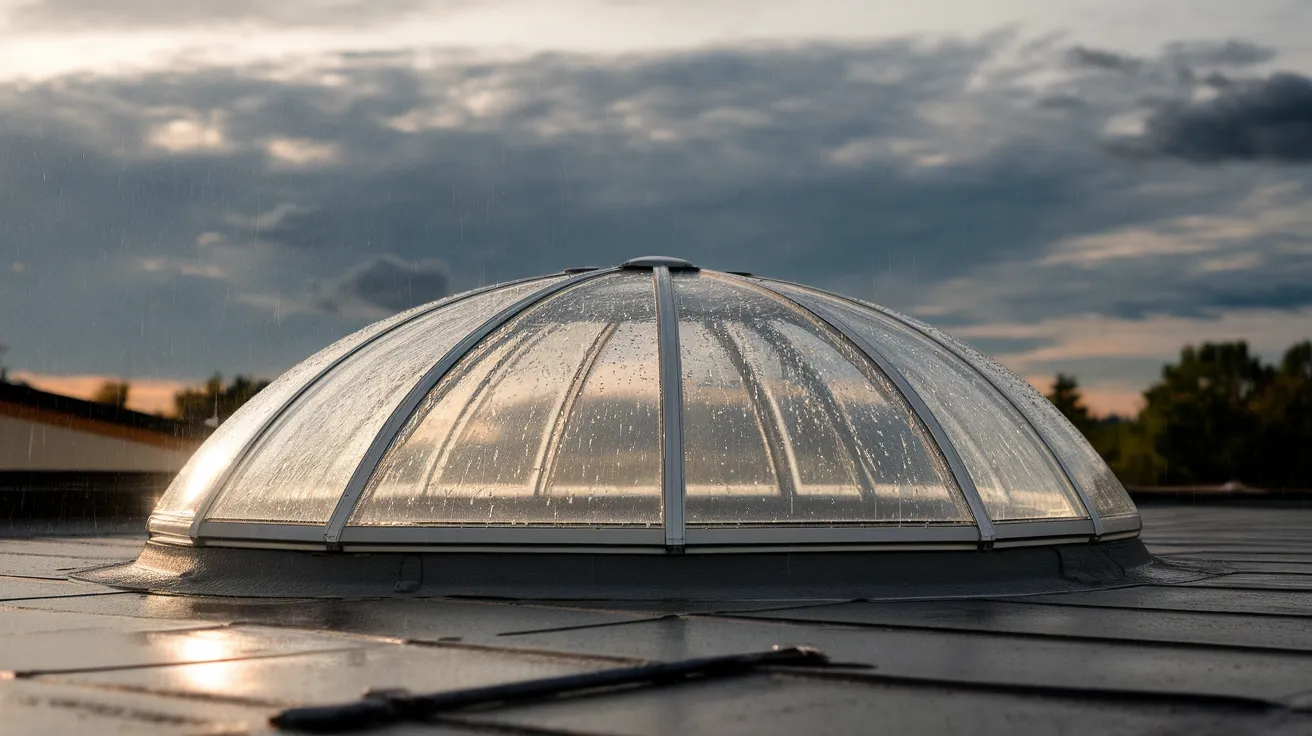
Dome skylights have a curved, bubble-like shape and are usually made of strong acrylic.
This design helps them hold up well in tough weather, like hail or heavy rain.
They spread light evenly and work well on flat or low-pitched roofs where water drainage might be an issue.
Because of their tough build and wide light spread, they’re a top pick for areas exposed to harsh weather.
5. Pyramid Skylights
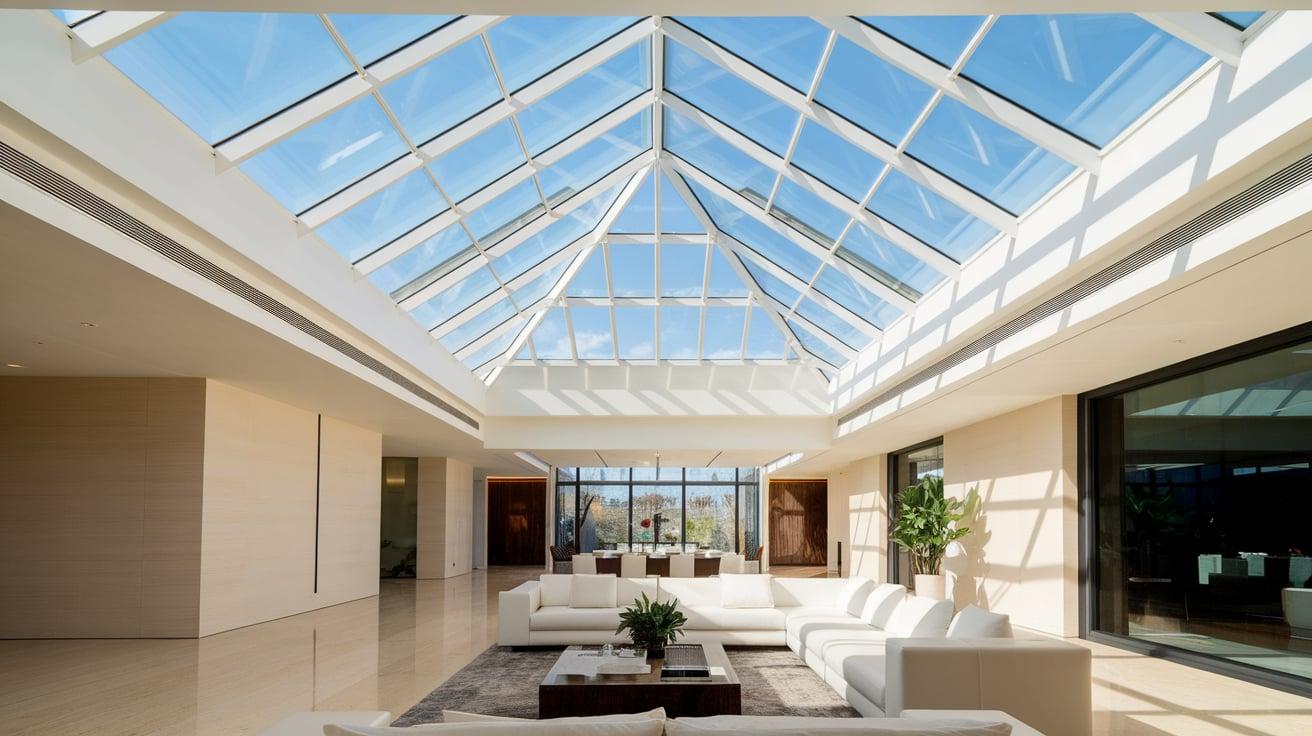
Pyramid skylights have four sides that rise to a point, like a pyramid. They’re made of glass or polycarbonate and give a bold, modern look.
These skylights let in lots of light from multiple angles and can help save energy by reducing the need for electric lights.
They’re a strong choice for big rooms, commercial spaces, or anyone looking to make a design statement with extra daylight.
6. Custom Skylights
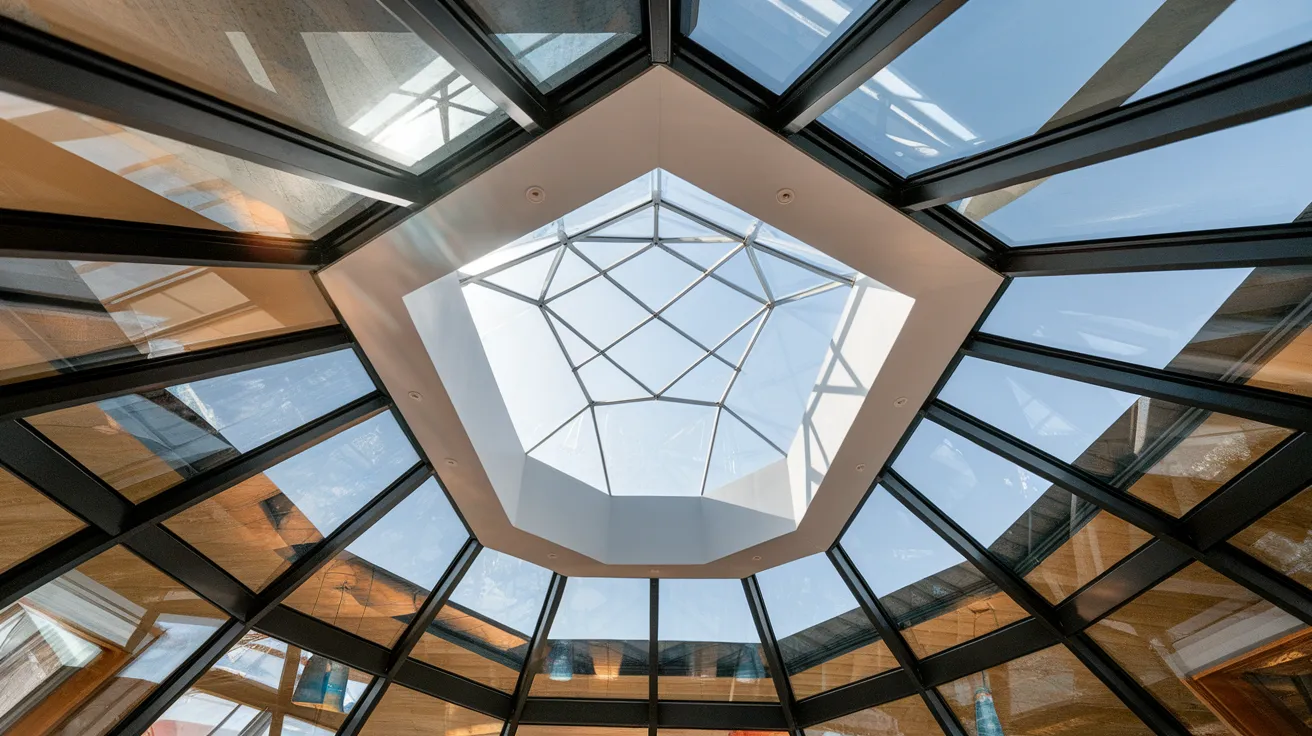
Custom skylights are made to fit special spaces or unique roof shapes. They can come in any size, shape, or material depending on what you need.
If your home has unusual angles or if you’re aiming for a specific style, a custom skylight can give you the perfect fit.
While they may cost more, they offer flexibility and can be designed to match both function and look exactly the way you want.
Factors to Consider When Choosing a Skylight
Below are some simple points to help you decide which skylight works best for your space:
- Room Type: Bathrooms and kitchens do better with skylights that open for airflow. Living rooms and hallways may only need extra light.
- Roof Shape: Flat or low-pitched roofs often work well with dome skylights. Steeper roofs can handle most types.
- Space Size: Small rooms, like closets or hallways, are great spots for tubular skylights. Bigger rooms might need something larger, like a pyramid or custom styles.
- Weather Conditions: If you live in a place with heavy rain or hail, choose strong materials like acrylic domes.
- Airflow Needs: Want fresh air? Go for ventilated skylights. If not, fixed skylights are simpler and easier to maintain.
- Budget: Some skylights cost more, especially custom ones. Match your choice to what fits your budget and home.
- Style Preferences: Choose a shape or style that fits your home’s design and your personal taste.
Installation and Maintenance Tips
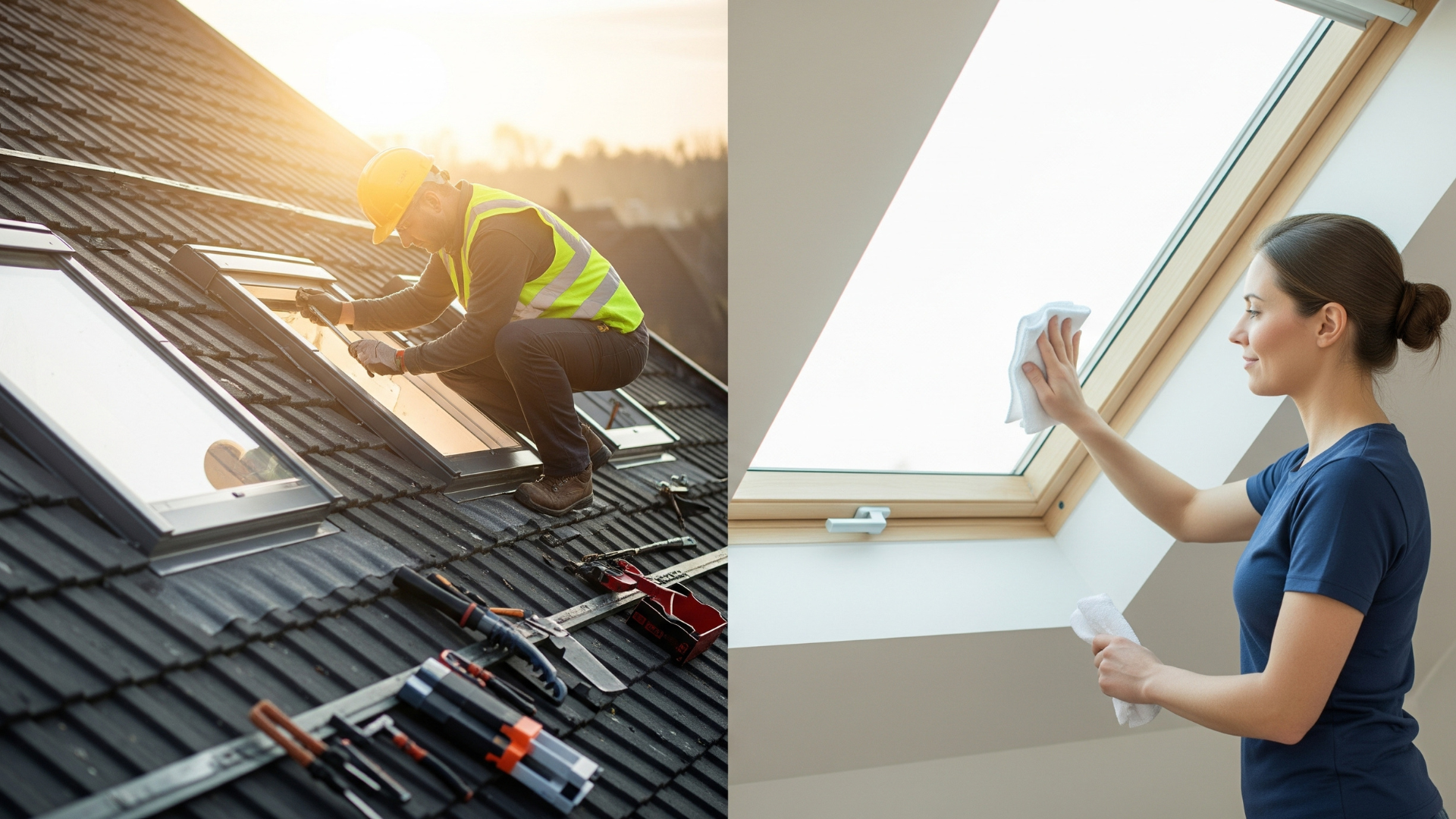
Putting in a skylight isn’t too hard if you plan it right and take care of it afterward. A few smart steps can help avoid leaks, save money, and make sure it works well for years.
- Plan Before Installing: Check the roof and ceiling to be sure they’re strong and have enough space.
- Hire a Professional: A trained installer can place the skylight properly and seal it well to avoid leaks.
- Pick the Right Spot: Place the skylight where it brings in light but doesn’t cause too much heat.
- Clean Regularly: Use gentle soap and a soft cloth to clean the surface without scratching it.
- Check for Leaks: Look at the seals now and then to make sure water isn’t getting in.
- Care for Moving Parts: If your skylight opens, make sure the hinges and screens are working smoothly.
Conclusion
Adding a skylight can make a big difference in how your home feels. It brings in natural light, can help with airflow, and even saves on energy.
But with so many types out there, it’s important to pick the one that fits your space and needs best.
I’ve shared the main types: fixed, ventilated, tubular, dome, pyramid, and custom, each with its own use and benefits.
I hope this made your choice a little easier.
If you’re lighting up a dark hallway or adding fresh air to a kitchen, there’s a skylight that’s right for you.
Just remember to think about your room, your roof, and your budget before making a decision. And once it’s in, a little care will help it last for many years.
If you’ve been unsure about what to choose, now you’ve got a clear place to start. I’m glad to help you find the right one.

